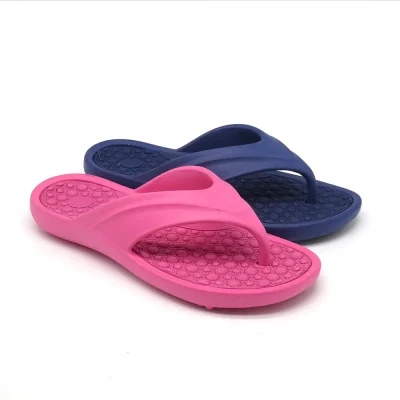Selecting the best materials for slipper soles involves considering factors such as comfort, durability, traction, and maintenance. Here are some common materials used for slipper soles, along with their pros and cons:
1. Rubber:
- Pros:
- Durability: Rubber soles are highly durable and resistant to wear and tear, making them long-lasting options for slipper soles.
- Traction: Rubber provides excellent grip and traction on various surfaces, reducing the risk of slips and falls.
- Water Resistance: Rubber is naturally water-resistant, making it suitable for both indoor and outdoor use.
- Cons:
- Less Breathable: Rubber soles may lack breathability compared to other materials, leading to potential moisture buildup and discomfort.
- Stiffness: Some rubber soles can be stiff initially, requiring a break-in period to achieve optimal comfort and flexibility.
2. EVA Foam (Ethylene-Vinyl Acetate):
- Pros:
- Lightweight: EVA foam is lightweight and flexible, providing a comfortable and cushioned feel underfoot.
- Shock Absorption: EVA foam absorbs impact effectively, reducing pressure on the feet and providing excellent cushioning.
- Softness: EVA foam offers a soft and plush feel, making it comfortable for extended wear.
- Cons:
- Durability: While EVA foam is comfortable, it may not be as durable as rubber, especially in high-wear areas.
- Compression: Over time, EVA foam may compress and lose its cushioning properties, requiring replacement.
3. Memory Foam:
- Pros:
- Customized Comfort: Memory foam molds to the shape of your feet, providing personalized support and cushioning.
- Pressure Relief: Memory foam evenly distributes weight and reduces pressure points, relieving discomfort and fatigue.
- Softness: Memory foam offers a luxurious and plush feel, making it ideal for relaxation and comfort.
- Cons:
- Heat Retention: Memory foam can retain heat, potentially causing feet to feel warm or sweaty, especially in hot weather.
- Durability: High-quality memory foam is durable, but lower-quality options may lose their shape and support over time.
4. Wool:
- Pros:
- Warmth: Wool is naturally insulating and provides warmth, making it ideal for cold weather or indoor use during cooler seasons.
- Moisture Wicking: Wool fibers wick moisture away from the skin, keeping feet dry and comfortable.
- Softness: Wool is soft and comfortable against the skin, providing a cozy feel.
- Cons:
- Less Durable: While wool is comfortable, it may not be as durable as rubber or EVA foam, especially in high-traffic areas.
- Maintenance: Wool requires special care and maintenance to prevent shrinking or felting when washed.
5. Synthetic Materials (e.g., Polyester, Nylon):
- Pros:
- Affordability: Synthetic materials are often more affordable than natural alternatives, making them budget-friendly options for slipper soles.
- Versatility: Synthetic materials can mimic the properties of natural fibers, providing comfort, warmth, and moisture-wicking capabilities.
- Easy Maintenance: Synthetic materials are typically easy to clean and care for, requiring minimal maintenance.
- Cons:
- Breathability: Some synthetic materials may lack breathability, leading to potential moisture buildup and discomfort.
- Durability: While synthetic materials can be durable, they may not offer the same longevity as rubber or high-quality natural fibers.
Conclusion:
The best material for slipper soles depends on individual preferences, usage patterns, and desired features. Rubber offers durability and traction, while EVA foam and memory foam provide cushioning and comfort. Wool provides warmth and moisture-wicking properties, while synthetic materials offer affordability and versatility. Consider the pros and cons of each material to choose the best option for your needs and preferences in terms of comfort, durability, and maintenance.


















